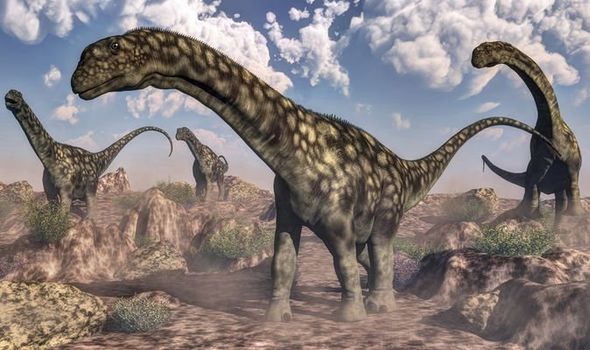New fossils uncovered in Argentina may belong to one of the largest animals to have walked on Earth.
A collection of bones found in Neuquén Province in northwest Patagonia have been identified as those from the sauropod family of dinosaurs, which had immensely long necks and tails, pillar-like legs, and includes species that grew to the largest sizes of land animals known to have ever existed.
However, the remains are not a complete skeleton, and consist mainly of pelvic bones and vertebrae, only giving an indication of the enormous scale of the animal.
The authors of a paper presenting the research on the find published in the journal Cretaceous Research suggest the animal could come from a previously unknown population of Patagonian sauropods.
The closest relative is Andesaurus, a type of “super-sized titanosaur” which existed during the middle of the Cretaceous Period in South America. These large sauropods grew to be 18 metres long.
However, the fossilised bone fragments indicate the new titanosaur was far larger, easily exceeding Andesaurus in size and likely making it bigger then the largest known land animals, the Patagotitan and Argentinosaurus – both types of sauropods.
The new specimen is “considered one of the largest sauropods ever found, probably exceeding Patagotitan in size”, the authors said.
Patagotitan was only announced by paleontologists in 2014, after the first bones were uncovered in Patagonia in 2013. It is believed to have weighed almost 60 tonnes, reached lengths of over 31 metres and at the time, experts said: “Given the size of these bones, which surpass any of the previously known giant animals, the new dinosaur is the largest animal known that walked on Earth.”
The researchers said: “The record of super-sized titanosaur sauropods has traditionally been extremely fragmentary, although recent discoveries of more complete taxa have revealed significant anatomical information previously unavailable due to preservation biases.”
The find provides paleontologists with a greater understanding of the emergence of gigantic sauropod dinosaurs, how they evolved, and how they lived.
It appears numerous sauropod species lived alongside one another, suggesting they occupied different roles in the food web, the scientists said.
“The specimen here reported strongly suggests the co-existence of the largest and middle-sized titanosaurs with small-sized rebbachisaurids (a family of sauropod dinosaurs) at the beginning of the Late Cretaceous in Neuquén Province, indicating putative niche partitioning.”
Sauropod dinosaurs were once widespread, and fossilised remains have been found on every continent on Earth, including Antarctica.
When early paleontologists first studied the bones of these enormous dinosaurs during the Victorian period, it was commonly thought that due to their size sauropod species were largely water-dwelling animals, however, later research revealed the adaptations which allowed these huge creatures to live on land. These include a system of air sacs, the existence of which are indicated by indentations and cavities in most of the vertebrae, and pneumatic, hollow bones, similar to those of present day birds, which made their huge limbs lighter.
The largest animal ever to have existed remains the blue whale, which can reach maximum sizes of 33.5 metres long and weigh 173 tonnes.















